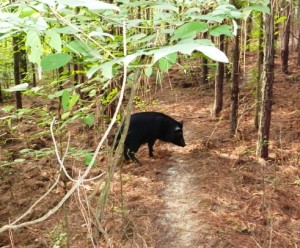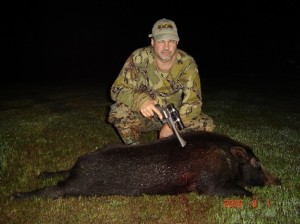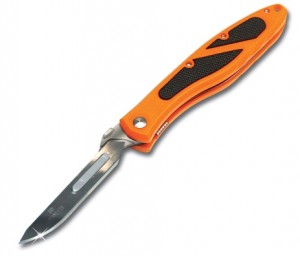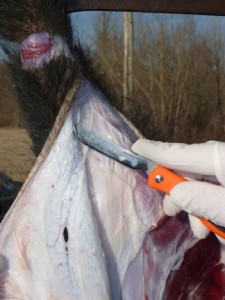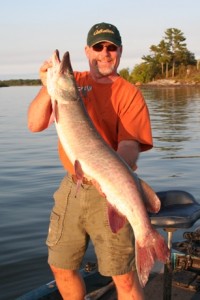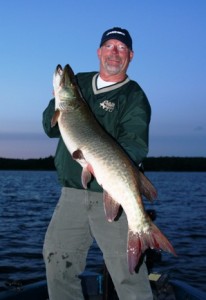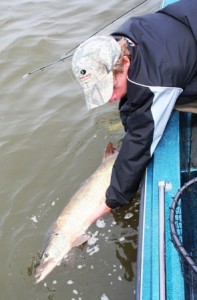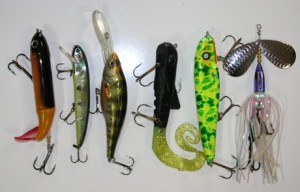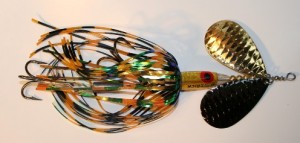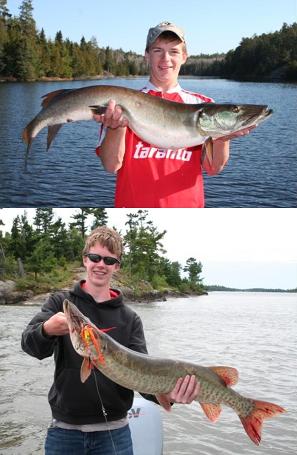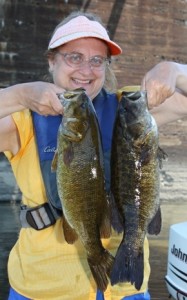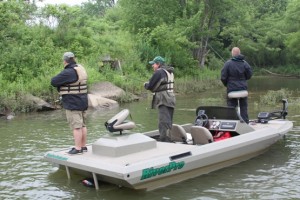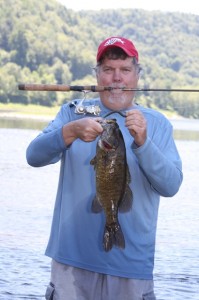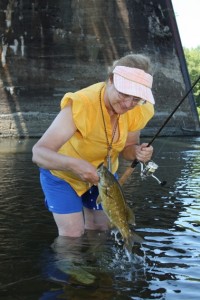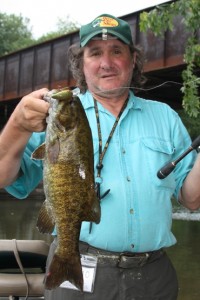On an on-your-own elk hunt, you have to handle the butchering and packing chores yourself.
Here’s how to go about it….
After Your Elk is Down
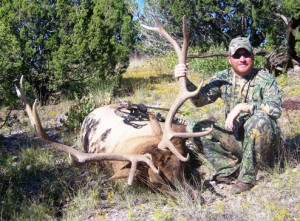
Man that was fun, calling this bull in and shooting him with a bow! But now … party’s over! Time to get to work butchering him before the meat spoils.
I’ll never forget the day I shot my first bull elk.
Just out of college, my old roommate and I traveled 21 miles on horseback into the rugged Selway-Bitterroot Wilderness Area of Idaho on a semi-guided elk hunt. The crusty old cowboy who took us in would have rather been drinking than hunting, but we didn’t care. We had shot a lot of mule deer already in our young lives, and even though we’d never hunted elk, how tough could it be?
Back in those days you could hunt during the rut with rifles, and on day two of our September adventure that old cowboy whistled in a big 6×6 bull that I killed with one shot from a 7mm Rem. Mag. at about 100 yards, inside some dark timber on a steep mountainside. As luck would have it, a 2 1/2-year old satellite 5×5 bull also came in, and my buddy killed him. Just like that, our elk tags were filled! We thought we were pretty hot stuff, too.
That is, until we walked over to those two bulls. Holy buckets, they were as big as horses! The thought of field dressing those two bulls on that 60-degree slope suddenly became overwhelming. This was not going to be like taking care of even the biggest-bodied deer we’d ever seen. I thought my bull weighed at least a ton! Looking back, after 35 years of elk hunting and nearly three dozen bulls killed, he probably weighed 750 lbs. Still, that’s a lot of bull — and we had two of them to butcher, then backpack three miles to a horse trail where cowboy could come get the meat.
That took us all of two days of back-breaking work. It was also the beginning of my love affair with elk hunting, one of North America’s most difficult, yet rewarding, big game hunting adventures.
Elk Hunting is Hard Work!
We’ve all heard the saying, “The fun’s over when you pull the trigger!” It is never truer than with elk hunting.
Basically, elk hunting is hard work. But if you think it’s been tough covering mile after mile of rugged mountain terrain for days on end trying to find an elk to shoot, just wait until you shoot an elk in rough country miles from the nearest road. Throw in some nasty weather, like a snow storm, or thunder and a little lightning. Stir in a pinch of thick brush and a steep mountain between you and civilization, and for good measure, add a dash of slippery-as-snot trail — if there’s any trail at all — and you begin to get the picture.
Getting your elk off the mountain to the butcher shop in prime condition is no easy task. Every year hunters lose tons of meat to spoilage or the butcher’s trim knife because they were not prepared to handle the task. Don’t let this happen to you.
The Right Skinning and Butchering Tools
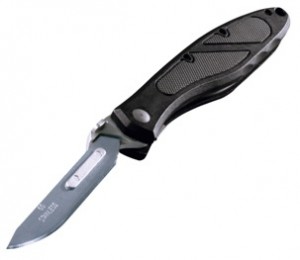 Meat care begins with the right tools. For elk hunting, you’re going to need at least one, and preferably two, hunting knives with strong blades so sharp they scare you. I really have come to like the Havalon Piranta-Z Black Pro Skinning Knife and Piranta Tracer-22 Skinning and Caping Knife for this type of job. With the weigh-nothing extra blades, no sharpening steel or stone is needed, a big plus! The only other tool you’ll need, a lightweight saw or hatchet for splitting the brisket, slicing through rib bones to reach the tenderloins, and cutting off the antlers, 50 feet of nylon parachute cord or thin-diameter rope, and four or five elk-sized cotton meat sacks. Don’t get the el cheapo cheesecloth bags, but buy the ones that are heavy enough to be washed and re-used. They’re the only ones strong enough for this job. Be sure to have at least one roll of fluorescent flagging and/or your GPS, so you can mark the spot when you have to come back for subsequent trips. A headlamp is cheap, even at twice the price, when you have to butcher and/or pack elk meat after dark.
Meat care begins with the right tools. For elk hunting, you’re going to need at least one, and preferably two, hunting knives with strong blades so sharp they scare you. I really have come to like the Havalon Piranta-Z Black Pro Skinning Knife and Piranta Tracer-22 Skinning and Caping Knife for this type of job. With the weigh-nothing extra blades, no sharpening steel or stone is needed, a big plus! The only other tool you’ll need, a lightweight saw or hatchet for splitting the brisket, slicing through rib bones to reach the tenderloins, and cutting off the antlers, 50 feet of nylon parachute cord or thin-diameter rope, and four or five elk-sized cotton meat sacks. Don’t get the el cheapo cheesecloth bags, but buy the ones that are heavy enough to be washed and re-used. They’re the only ones strong enough for this job. Be sure to have at least one roll of fluorescent flagging and/or your GPS, so you can mark the spot when you have to come back for subsequent trips. A headlamp is cheap, even at twice the price, when you have to butcher and/or pack elk meat after dark.
Your goal is to prevent meat spoilage. You do that by cooling the meat, remembering that on big-bodied animals like elk, meat can spoil both from the inside and outside. You also must strive to keep the meat as clean as possible, free from dirt and its inherent bacteria.
Secure the Elk

If you elk hunt on public land, you must be prepared to work hard, cover lots of country, and then if Lady Luck smiles on you, be able to take care of all that meat yourself in the field.
Before any cutting begins, you have to secure the elk, which often has expired on a steep sidehill. That’s where the cord or rope comes in, used to tie antlers or legs to a tree or bush to hold the animal in place as you work. Point the butt downhill if you can. It should be said that butchering an elk is much easier with two people, so if you can get some help, you’re advised to do so.
Field Dress or Quarter Your Elk?
There are two ways to clean any big game animal, including elk. You can do the basic field-dressing routine, which means first gutting the animal. Or you can take the quarters, backstrap, and neck off without gutting. I do both, depending on circumstances.
The basic field dressing procedure is the same as it is with deer and other big game, so we won’t detail it here. You remove the innards, including the anus, taking care not to puncture the bladder or stomach and spilling their contents onto the meat. Suffice it to say, this is not a good idea. Make sure you remove the heart, lungs, and esophagus.
I field dress an elk when I am not going to be able to finish the job right away, as when I might have to leave the carcass to cool overnight before packing it out. When I do this I lay the animal on its back, then cut the front shoulders so they lay out away from the carcass, and cut the hams to the ball joint so they too, are opened up enough to cool down.
However, these days I prefer to simply quarter the animal without exposing his guts. It’s less messy and smelly, and you don’t lose any meat.
To do that, roll the elk on one side and use your knife to remove the hind quarter through the ball joint, and front shoulder by cutting behind the scapula, leaving the hide on until the quarter is either hung or ready for boning and insertion into the meat sacks. That helps keep dirt and crud off the meat itself. Next remove the backstrap, half the neck meat, and the meat off the outside of the rib cage or, if you like, use your saw to cut the ribs completely off. I rarely do this, though. You then roll the elk over and repeat. To get the tenderloins out — they’re located inside the carcass, on each side of the backbone — use the lightweight saw to cut through the tops of the rib cage and remove them this way. When ready for bagging, skin the quarters out. Voila! One butchered elk, without the big mess of field dressing it first.
I virtually always bone my elk meat out, for two reasons. One, it gets rid of excess weight that I don’t have to pack down the mountain. And two, removing the bone opens the meat up and facilitates cooling. Thick chunks of elk meat, like those found on the hams and neck, will spoil quickly near the bone unless they are cooled properly. Boning helps this process. Hunters with the luxury of pack horses often like to keep the bone in, as it can make loading quarters into pack boxes easier.
Some hunters like to take the liver, heart, and tongue, all of which make some fine eatin’. An elk liver is about the size of a football, the heart like an elongated softball, so you’ll have plenty of extra packing if you want them. I often do.
Dreams Do Come True …. But Don’t Count On it!
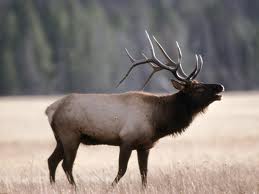 Let me tell you about a fantasy that actually came true on the 21st bull elk I killed. After years of packing meat either on my back or atop pack horses, I was invited to hunt a private New Mexico ranch. The nice 6×6 I shot was a big-bodied critter, but it didn’t matter — the guide drove the truck right up to him, winched him into the bed — whole — and drove back to the barn, where the elk was hung, his innards removed, and the butcher took place indoors in a clean, sterile environment.
Let me tell you about a fantasy that actually came true on the 21st bull elk I killed. After years of packing meat either on my back or atop pack horses, I was invited to hunt a private New Mexico ranch. The nice 6×6 I shot was a big-bodied critter, but it didn’t matter — the guide drove the truck right up to him, winched him into the bed — whole — and drove back to the barn, where the elk was hung, his innards removed, and the butcher took place indoors in a clean, sterile environment.
Now that’s heaven on earth! But don’t count on it. On an on-your-own elk hunt, you’re going to have to handle the butchering and packing chores yourself. And while it’s hard work, I look upon it as a labor of love. It means both that I’ve been successful, and that my family can look forward to a year’s worth of some of the most delicious and nutritious meat in all the world.
Was this useful? Ever use a Havalon to field dress and skin an elk?
Tell us about it here.
42,937 total views, 2 views today





